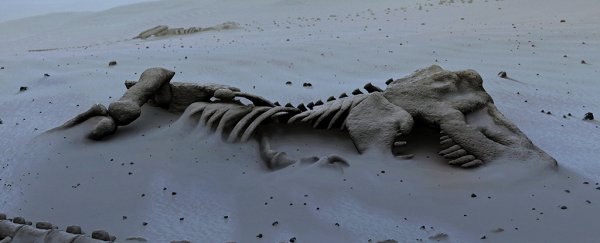Species can actually go extinct more than once. In a biological sense, species become extinct when the last animal of a species stops breathing. But they can also become extinct a second time, researchers say.
When a species disappears from our collective memory and cultural knowledge, it becomes extinct in a different way. That second form of extinction – societal extinction – is the subject of a new study investigating how damaging this phenomenon can be.
For example, societal extinctions change how we view the environment around us and can impact efforts at conservation.
The researchers are calling for more efforts to prevent societal extinction – because as more and more species disappear from our memories, there's evidence that it alters our perception of how important it is to protect what remains.
"Societal extinctions can affect conservation efforts aimed at protecting biodiversity because it can diminish our expectations of the environment and our perceptions of its natural state, such as what is the standard or relatively healthy," says biological systems researcher Josh Firth from the University of Oxford in the UK.
The researchers looked at dozens of previous studies to identify how societal extinction happens, identifying contributing factors such as symbolic or cultural importance, how long ago a species was last alive, and how much of a connection it had to humans.
Societal extinction usually but not always happens after biological extinction, the researchers note. Sometimes, both extinctions can happen at the same time, depending on how well and widely known a particular species is.
One example is medicinal plants. Many of these are likely to become societally extinct even though they're still around in nature, because over time we've replaced traditional herbal medicines with more modern alternatives, losing knowledge along the way.
Most species – such as those far removed from civilization, or those too tiny to be noticed except via a microscope – never have a societal presence to begin with. Meanwhile, for other species, the societal presence can break with reality after a biological extinction.
"Species can also remain collectively known after they become extinct, or even become more popular," says conservation biologist Uri Roll from the Ben-Gurion University of the Negev in Israel.
"However, our awareness and memory of such species gradually becomes transformed, and often becomes inaccurate, stylized, or simplified, and disassociated from the actual species."
Take the Spix's macaw for example, currently extinct in the wild: A 2013 conservation report from Brazil surveyed 242 children from the bird's former habitat, and almost all of them incorrectly believed the species originated from Rio de Janeiro, because of its appearance in the 2011 animated movie Rio.
Ultimately, the researchers found multiple links between societal extinction and a lack of support for biodiversity conservation. In other words, it's important to keep the memories and the records of extinct species in order to realize what's been lost.
The damaging activities of humans and a lack of connection with nature are combining to create a societal extinction debt, the team concludes – and many more occurrences of societal extinction are likely to lie ahead unless something is done to prevent them.
"Sustaining awareness of species and their threats also holds cognitive and emotional consequences for individuals," the researchers write. "Resolving these issues will require multidisciplinary approaches that go beyond ecology and conservation biology."
The research has been published in Trends in Ecology & Evolution.
